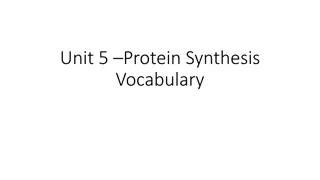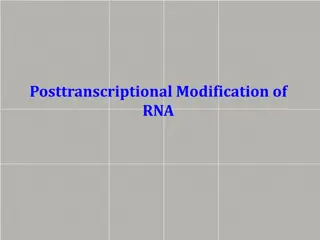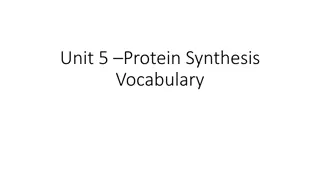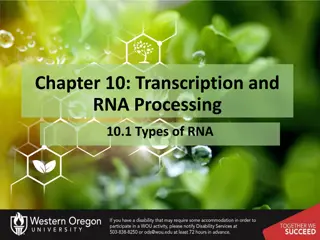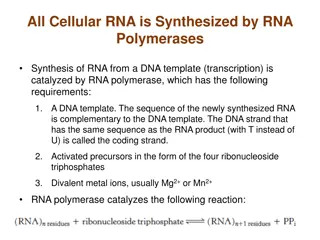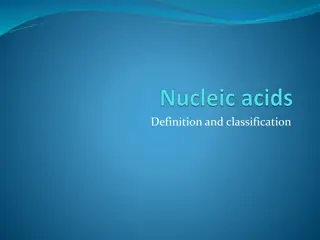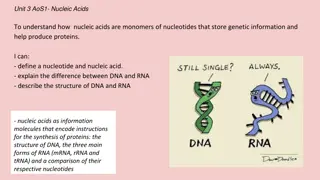Understanding RNA and Protein Synthesis Processes
RNA plays a crucial role in protein synthesis as it carries coded instructions from DNA. There are three types of RNA - mRNA, rRNA, and tRNA, each serving specific functions in the process. The steps of protein synthesis involve transcription, where DNA is copied into mRNA, and translation, where mRNA is read by ribosomes to create proteins using amino acids delivered by tRNA.
Download Presentation

Please find below an Image/Link to download the presentation.
The content on the website is provided AS IS for your information and personal use only. It may not be sold, licensed, or shared on other websites without obtaining consent from the author. Download presentation by click this link. If you encounter any issues during the download, it is possible that the publisher has removed the file from their server.
E N D
Presentation Transcript
Gene section of DNA that are coded instructions for the cell The instructions are to make proteins, which in turn run and carry out processes in the cell RNA is needed to help carry out the code.
RNA is made of nucleotides like DNA. There are a few differences . 5 carbon sugar ribose (instead of deoxyribose) Phosphate group Nitrogen base- NO THYMINE (T) instead is uracil (U) A-U
RNA is a single strand What is wrong with this pic?
There are 3 Types of RNA mRNA- messenger RNA copies code of DNA and delivers it rRNA- ribosomal RNA part of ribosome tRNA- transfer RNA carries amino acid coded for to build protein
Protein Synthesis For DNA to create a protein there are 2 major steps: 1. Transcription 2. Translation
TRANSCRIPTION DNA is copied into mRNA in the nucleus (*DNA NEVER leaves the nucleus) mRNA carries the code outside the nucleus to the ribosome to be read
TRANSLATION mRNA is read by the ribosome in the cytoplasm! The code calls for specific amino acids to join to create a protein Amino acids brought into place by tRNA






